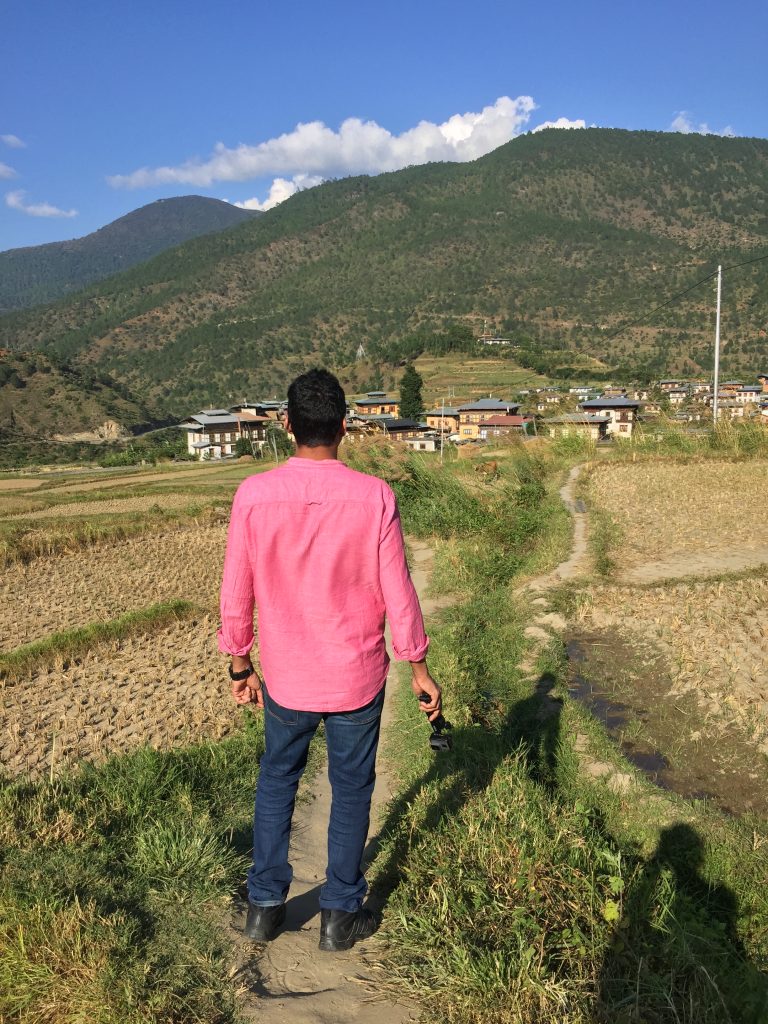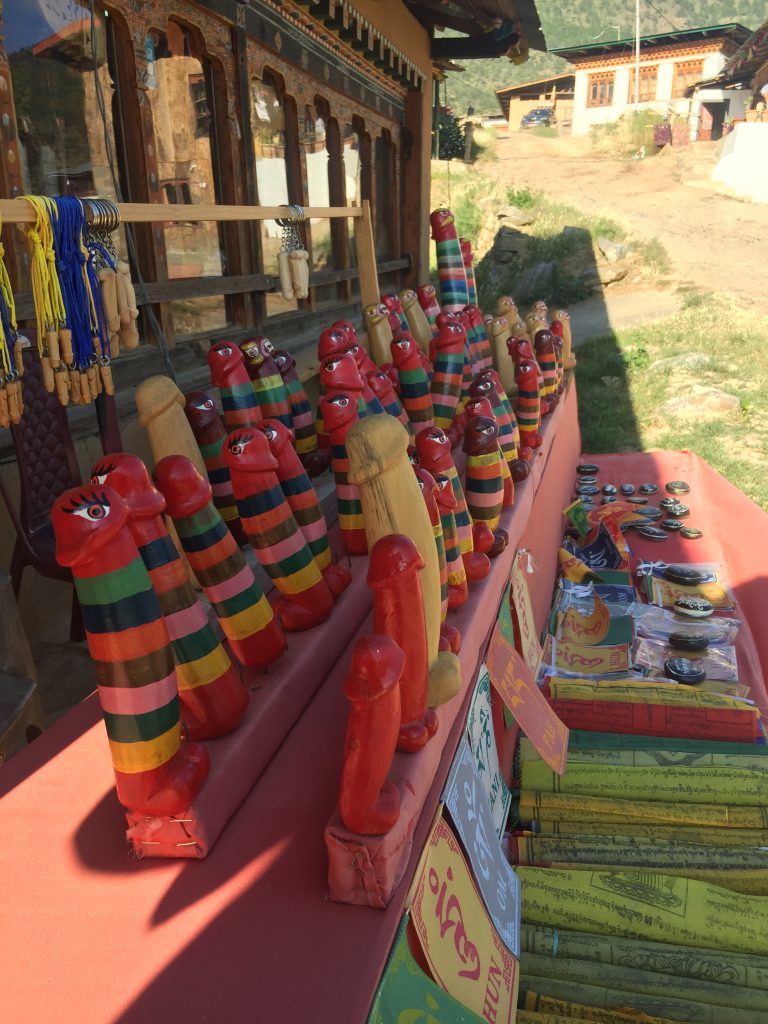Have you ever heard of the term “Gross National Happiness”? Every country that we know measure their economic performance by something that is largely materialistic- money. I’m not saying that money doesn’t effect the way we live our lives but can we truly concede that it is the (if not the only) source of our happiness.
The concept of integrating the non-economic aspects of well-being, spirituality and compassion with governance had been overlooked by every economist. Rule with the heart of a servant, serve with the heart of a king. Only a king could have thought about this- the paramount index of progress is happiness and contentment.
It was in the form of a royal decree (or Kasho in Bhutanese) by King Jigme Singye directed to the Planning Commission that to evaluate the achievements of the Sixth Plan was to determine if the people enjoy happiness and comfort. If only other nations would do the same for their people.

In an attempt to see how life thrived in this Buddhist kingdom and of course an excuse to get away from “the usual”, I visited Bhutan for a week-long trip. We flew to Bagdogra and then drove to the border towns of Jaigaon and Phuentsholing- which are separated by a walk-through gate. While Phuentsholing is a calm, sparkling clean town, Jaigaon (in the state of West Bengal) is sadly- not-so-clean, noisy and chaotic.

Great Buddha Dordenma,
Thimphu
Hotel Bhutan, Thimphu 
Dochula Pass 
Punakha Dzong, Punakha
Druk Wangyel Cafe at Dochula Pass.
Oldest iron bridge at Paro.
We stayed that night at Phuentsholing and started to Thimphu (the capital city) the following day. Our tour operator arranged a Bhutan-registered van and a guide registered with the Tourism Council of Bhutan. We applied online for the entry permit and took a printout to the immigration office near the Bhutan Gate- where our passports were stamped.
We reached Thimphu around 3 pm in the evening and checked in to our hotel. There wasn’t much to see in Thimphu except for the spectacular Great Buddha Dordenma statue. We spent the rest of the evening lazying at the Clock Town Square and shopping for souvenirs at the stalls nearby.

Another notable bucket-list item I accomplished that night, was to get wasted on Bhutan’s K5 whiskey. What is so special about it? Well, it was blended to commemorate the auspicious occasion of the Coronation of His Majesty the Fifth Druk Gyalpol.
We had a good night’s sleep before starting to Punakha the next morning. On the way to Punakha is Dochula Pass- we stopped here for an hour to catch a glimpse of the tallest peaks in Bhutan and what is most-likely the most beautiful war memorial I have seen to date.
We reached Punakha around noon time and headed to the second largest Dzong in Bhutan- the Punakha Dzong. Not far from the Dzong is the longest suspension bridge in Bhutan- built on the Po Chu river. We spent an hour or two there before heading to the most bizarre village I have visited since Malana – Sopsokha.
The weather in Punakha is relatively warmer and the short walk to the Chimi Lhakhang monastery got us famished. I wasn’t too sure about eating at Sopsokha village for the simple reason that nothing looked interesting on the menu. We headed to our accommodation at Punakha and called it a night after a couple of drinks and some decent food.

The longerst suspension bridge at Punakha 
En route to Niger’s Nest 
Sunset at Chelela Pass
From Punakha we drove to (according to me) the most picturesque town in Bhutan- Paro. It is also the only town in Bhutan with an International airport. Also, in this valley town you will find the most prominent Buddhist sacred site called the Paro Taktsang or as the world knows it – Tiger’s Nest.
Not far from Paro is Haa Valley which is separated by the highest motorable pass in Bhutan- Chelela. The Haa Valley is also known to be the base of IMTRAT (Indian Military Training Teams) and is of strategic importance to India. A visit to the Chelela Pass was not on our itinerary but we came to an understanding with our guides.

Let’s do this!
Here’s the thing- if you intend to go to Haa Valley then you need to get the permit to cross Chelela Pass but if your objective is to catch a glimpse of the sunset at Chelela Pass (which we did) you don’t need a permit. All you need is enough fuel to travel about 60 km (approx 26 km one way).
We visited the Bhutan national museum but did not visit the Paro Dzong for the fact that it would be similar to the Punakha Dzong; only that the former happens to be the biggest Dzong in Bhutan. Also, if we would have visited the Dzong, we would have not been able to see the sunset at Chelela Pass.

Zangtopelri
Our last day in Bhutan was a hectic one- most tourists who include the trek to Tiger’s Nest in their itinerary tend to keep the rest of the day to relax after the steep climb. In order to save an extra day, we completed the trek by noon and made a dash back to the border town Phuentsholing- luckily we made it before nightfall.
I am glad that we were able to squeeze in quite a lot of travel into our 5-day itinerary because in the end- no one wants to hear anyone say, “Hey, didn’t you go there?”! Bhutan, according to me, is a safe country and the people are open and friendly. Most Bhutanese people also speak in English because it is taught in school.

The Tourist 
Inside Punakha Dzong
When I mean safety, I am emphasising on the welfare of tourists visiting the country- crime rate in Bhutan is among the lowest globally. Needless to say, Bhutan is extremely beautiful and the forests are luxuriant. It is forbidden to cut down any tree or to kill any animal. Life is based on the core principles of Buddhism that inspires even the laws of the country.
Bhutan’s economy thrives on agriculture, tourism and the sale of hydroelectric power to India. Though Bhutan’s economy is one of the world’s smallest, it has grown rapidly in recent years. Bhutan has a rich cultural heritage which has largely remained intact because of it’s isolation from the rest of the world until the mid-20th century.
But, having almost near perfect roads throughout the country, will everything remain the same? I would sure hope so.
First comes electricity, then comes television and then comes pop stars and materialism. But, maybe that’s arrogant and you know.. it’s just easy for me to say.
Anthony Bourdain : Parts Unknown – Bhutan








Leave a Reply